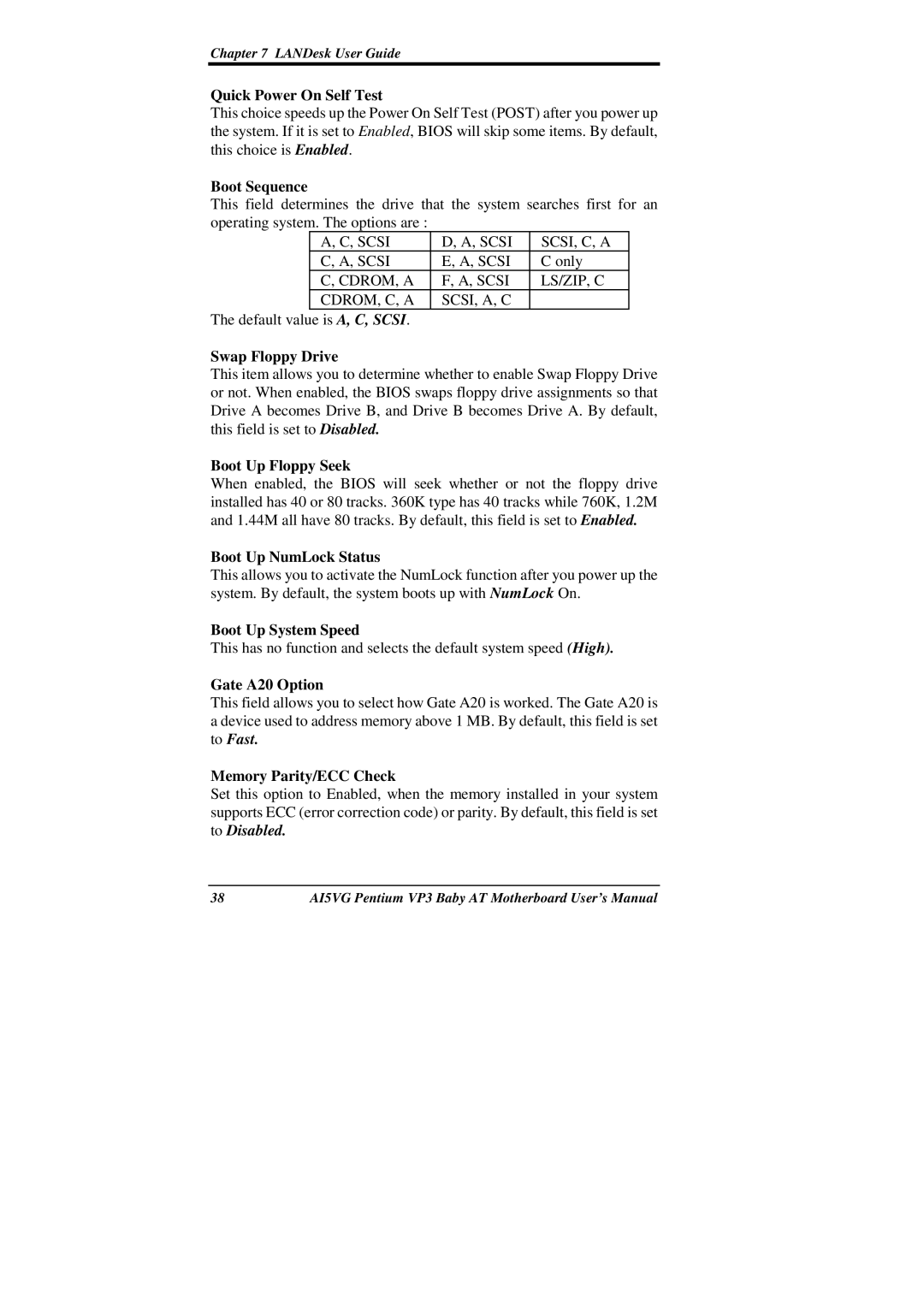
Chapter 7 LANDesk User Guide
Quick Power On Self Test
This choice speeds up the Power On Self Test (POST) after you power up the system. If it is set to Enabled, BIOS will skip some items. By default, this choice is Enabled.
Boot Sequence
This field determines the drive that the system searches first for an operating system. The options are :
| A, C, SCSI | D, A, SCSI | SCSI, C, A |
| C, A, SCSI | E, A, SCSI | C only |
| C, CDROM, A | F, A, SCSI | LS/ZIP, C |
| CDROM, C, A | SCSI, A, C |
|
The default value is A, C, SCSI. |
|
| |
Swap Floppy Drive
This item allows you to determine whether to enable Swap Floppy Drive or not. When enabled, the BIOS swaps floppy drive assignments so that Drive A becomes Drive B, and Drive B becomes Drive A. By default, this field is set to Disabled.
Boot Up Floppy Seek
When enabled, the BIOS will seek whether or not the floppy drive installed has 40 or 80 tracks. 360K type has 40 tracks while 760K, 1.2M and 1.44M all have 80 tracks. By default, this field is set to Enabled.
Boot Up NumLock Status
This allows you to activate the NumLock function after you power up the system. By default, the system boots up with NumLock On.
Boot Up System Speed
This has no function and selects the default system speed (High).
Gate A20 Option
This field allows you to select how Gate A20 is worked. The Gate A20 is a device used to address memory above 1 MB. By default, this field is set to Fast.
Memory Parity/ECC Check
Set this option to Enabled, when the memory installed in your system supports ECC (error correction code) or parity. By default, this field is set to Disabled.
38 | AI5VG Pentium VP3 Baby AT Motherboard User’s Manual |
